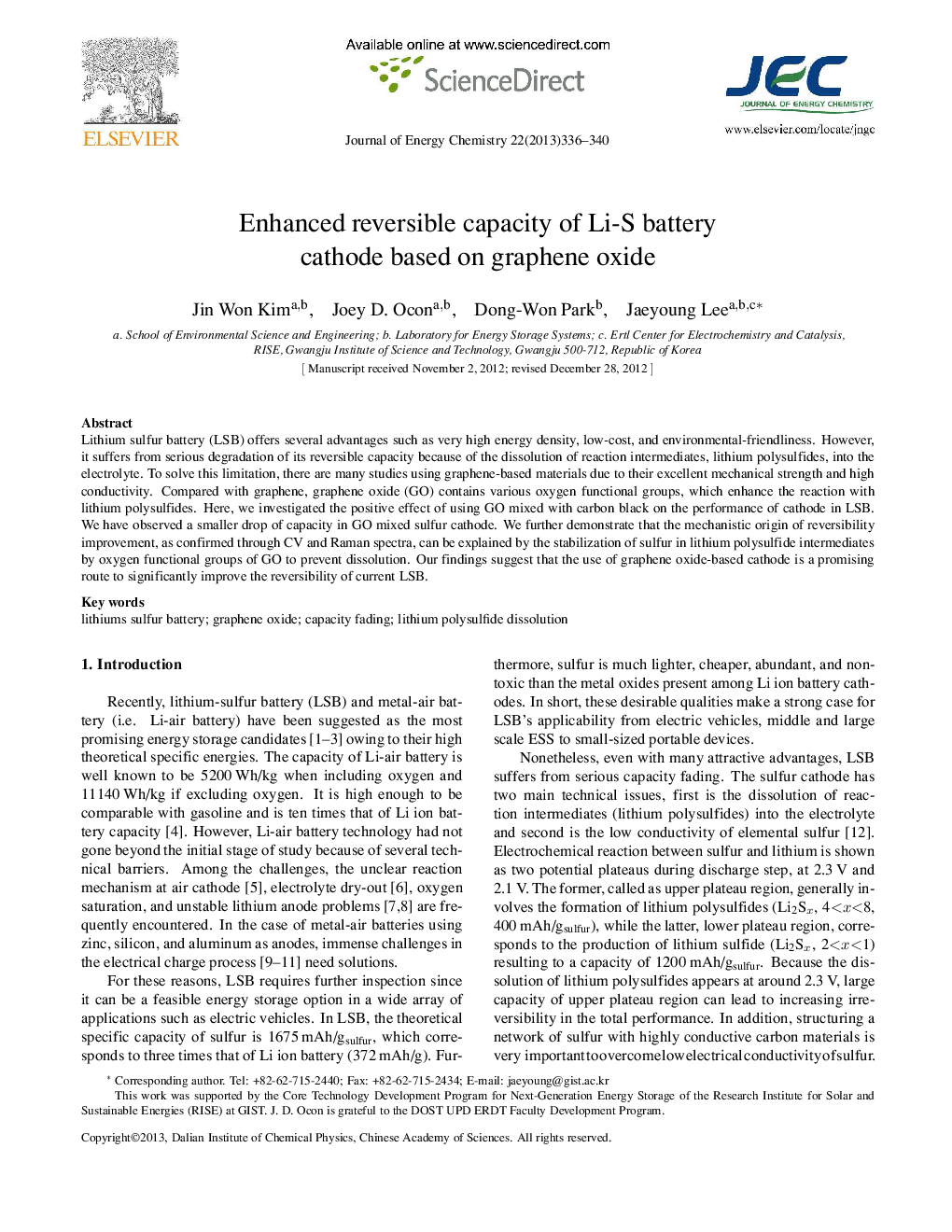| Article ID | Journal | Published Year | Pages | File Type |
|---|---|---|---|---|
| 64009 | Journal of Energy Chemistry | 2013 | 5 Pages |
Lithium sulfur battery (LSB) offers several advantages such as very high energy density, low-cost, and environmental-friendliness. However, it suffers from serious degradation of its reversible capacity because of the dissolution of reaction intermediates, lithium polysulfides, into the electrolyte. To solve this limitation, there are many studies using graphene-based materials due to their excellent mechanical strength and high conductivity. Compared with graphene, graphene oxide (GO) contains various oxygen functional groups, which enhance the reaction with lithium polysulfides. Here, we investigated the positive effect of using GO mixed with carbon black on the performance of cathode in LSB. We have observed a smaller drop of capacity in GO mixed sulfur cathode. We further demonstrate that the mechanistic origin of reversibility improvement, as confirmed through CV and Raman spectra, can be explained by the stabilization of sulfur in lithium polysulfide intermediates by oxygen functional groups of GO to prevent dissolution. Our findings suggest that the use of graphene oxide-based cathode is a promising route to significantly improve the reversibility of current LSB.
